 Our consultants reveal how they make remote courses every bit as engaging as those in the real world.
Our consultants reveal how they make remote courses every bit as engaging as those in the real world.
2020 is changing us. Working from home, ‘meeting’ friends over Zoom and taking yoga classes via YouTube have become the go-to replacements for activities that are currently out of bounds.
We’re all wondering what effect these shifts will have in the long term. Will they become the new normal? Remote working, you imagine, could easily have lasting take-up. Zoom happy hour? Perhaps less so. It’s a matter of whether or not the virtual can compete with the let’s-call-it ‘real’.
The question is certainly looming large in the world of corporate learning. Things had been changing for a while, even before Covid-19 turned the world upside down. Face-to-face courses have long been our staple. (We’ve trained over 60,000 people that way, mostly in groups of eight to ten.) But we had seen a gradual increase in clients opting to run their courses remotely in recent years. Now, of course, it’s the only option.
For us, this strange spring marks nearly 11 years of training in the virtual classroom. And things have certainly changed down the years. Our pioneering outings back in 2009 involved an inch-thick guide to the technology and an experience – as one of our trainers described it – akin to ‘using walkie talkies’. He’s exaggerating (a little), but certainly both we and the technology have evolved in that time. We haven’t always got everything right. Some of the lessons on the way have been tough ones. But putting them to good use is what’s helped us hone our whole approach.
And now that all our lives have shifted – temporarily at least – entirely online, we’ve been reflecting on what that decade-plus of virtual learning experience has taught us. If you’re having to deliver learning in these odd times, it may help to know what we’ve learned from our experiences, good and bad.
1. Prepare prepare prepare (and always have a back-up plan)
Naturally, virtual learning means using technology. Tech is interwoven with most aspects of our lives these days. So we can probably all agree on one thing: there’s a good chance it will go wrong when you most need it to work. So be prepared.
Participants don’t want to be scrabbling around for the meeting link on the day of the training, then realise they don’t know how to set up their headset or find they can’t login because the company firewall is blocking them. So recognise that these are all things that could happen, then do what’s necessary to make them incredibly unlikely.
Our operations team turn proper preparation into an art form. Before any virtual sessions, they’re in touch with the client’s IT team, checking the right specifications are in place, looking at alternatives if necessary and troubleshooting any potential issues.
They’ve also learned the hard way to always run test sessions for delegates. It could be tempting to skip this step. But five minutes checking they can access the software and to give them a whistle-stop tour of its features saves time and the stress of connection snafus on the day. A member of our team is also always online at the start of a session to act as an usher – providing a virtual welcome and ironing out any last-minute issues.
They also always have a plan B. Ninety-nine times out of a hundred, they won’t need it. But being ready with alternative software creates a virtual back-up room to whisk delegates to if technology really isn’t behaving. That will mean minimal disruption, more learning and less stress all round.
2. Virtual learning is different
That point may sound painfully obvious. But the most painful remote-learning experiences tend to spring from providers who haven’t adapted their approach by understanding that we act, feel and learn differently online. And not just because we might be wearing pyjama bottoms under the desk.
First, we can tire more easily. This is especially so right now, when almost every interaction we have is taking place in online meetings. We can feel drained by the bright screen, having to focus harder on non-verbal cues like tone and – if we’re on a webcam – a sense of being under scrutiny. Plus, we miss the chance to pick up on the energy of other people in the room.
So counter these effects by changing the course materials and how you run the sessions. In the case of full-day courses, make that day slightly shorter than for in-person training and include more mini-breaks to keep energy levels high. We also generally avoid webcams. That may be going against the grain now that the world has jumped onto Zoom. But it stops participants feeling constantly scrutinised and frees them to simply focus their energy on the learning.
There’s a limit to how much you can take in on screen, at least in one go. Our focus is written communication, which means reviewing relevant, real-life documents during sessions. But we’ve learned that it’s best not to be too ambitious in trying to share large chunks of those documents on the fly. It just overwhelms participants.
In fact, with remote learning in general, not everything has to happen there and then on the screen. Instead, you can play to the strengths of different approaches. For example, if a longer document is central to the training, we share it in advance and encourage participants to read the material ahead of time.
Similarly, our in-person training includes a comprehensive, bespoke manual, with learning content and exercises. Our remote learning includes this manual too. Participants interact with it slightly differently on the day, but they are still left with a complete guide to refer back to afterwards. This is far more useful for long-term understanding than a simple slide deck. (And more work to produce, granted – but worth it.)
With in-person training, slide decks are often more of a hindrance than a help – a cue for participants to switch off or stop listening (which is why we wouldn’t normally use them). But in remote learning, they’re indispensable, as they help bridge the gap left by the physical distance between trainer and trainees.
This doesn’t mean you can copy and paste the content of your usual training materials into PowerPoint, though. Limit the content on each of the slides, and use lots of them: moving swiftly from slide to slide keeps up momentum. As our consultant Gary Woodward notes, it’s critical to tie visuals on the slides to the narration accompanying it. ‘You need more signposting online,’ he says. ‘Always ensure that you capture the key points visually and there’s nothing critical that you’re just going to say and not show.’
3. Even expert trainers have new things to learn
One of the things that marks the virtual classroom out from other kinds of online learning (like e-learning or video lessons) is that there is a real live human leading the session. And when that real live human shifts from the physical classroom to the virtual, the expertise they’ve spent years refining is only part of the story. Just as materials from in-person courses can’t be dropped wholesale into the virtual classroom, the delivery has to adapt to the nature of the online environment too.
Our trainers are specialists in writing and communication. They’re also experts in being trainers – we make sure of that with our vetting and six-month train-the-trainer process. Both serve them well in the move to remote training, but they have still had to adapt and master new techniques.
These range from the practicalities of running the tech to the finer art of engaging and managing the experience of delegates who may be located hundreds (or even thousands) of miles away.
They have to smoothly manage the program’s features while simultaneously imparting their wisdom. Our consultant Jack Elliott likens it to ‘a mix of piloting an aircraft and old-fashioned radio – but with pictures’. You have to consider carefully how you sound (just as a radio presenter would) – and that may not be how you think you sound. Internet audio flattens our voices. ‘Turn up the enthusiasm dial even higher than you think, to make sure it comes through,’ is Gary’s advice.
The best trainers have finely tuned people skills, honed over years of reading the room, picking up on body language and gently coaxing shy or reluctant delegates out of their shell. Their humour and delivery will still carry online. But when it comes to reading a virtual room, there’s a lot you can detect if you adjust how you tune in. ‘Encouraging verbal interaction is really important,’ says our consultant Doug Nel. ‘You can pick up a lot from the language and tone people use.’
And thoughtful use of software features – equivalent to the emojis we use to express ourselves on social media and messaging platforms – also feed in. ‘I encourage participants to regularly use the ‘status’ options like ‘Agree’, ‘Disagree’ and ‘Laughter’ for general, non-verbal interaction,’ says Doug. ‘As well as the chat function.’
[bctt tweet=”‘Don’t assume everyone likes to engage in the same way in the virtual classroom.’ – Gary Woodward, @EmphasisWriting”]
But you still have to stay sensitive to individual differences to ensure everyone is comfortable. ‘You can’t assume that everyone likes to engage like an extrovert. Not everyone has to speak on the mic, for example,’ says Gary. ‘It’s important not to project your own biases or personality onto them – just as it is in an in-person session.’
And there’s one more helpful way to sense how things are going for the group: ask them. ‘You lose all the visual contact with them and your usual instincts about what’s working and not working to adjust and adapt on the day,’ says Gary. ‘So you just have to be a bit more explicit about getting feedback as you go: “How’s this going?” “Anything we’ve not covered that you want to include?”’
They can always tell you in a private message if they prefer. ‘I make a point of saying they can send me a private chat message whenever they like,’ says Doug. ‘It’s important if someone has a concern they don’t want to share with the group.’
4. Make the most of the tech – but don’t be ruled by it
When you make the move online, it’s tempting to think you have to seek out the most sophisticated (read: complicated) platform out there to give your participants the best experience. But you probably need fewer bells and whistles than you think.
We’ve experimented with a range of platforms over the years, and it’s certainly a good idea to keep up to date with what’s out there and what’s possible. Be open to adapting and evolving – just as technology always will. But ultimately, you need to find a platform that does just enough, and that you and your team can use comfortably. It’s also critical for the delegates’ experience that it’s reliably stable.
And when it comes to making use of that platform, the message is similarly straightforward: just because a function exists doesn’t mean you have to use it.
[bctt tweet=”When you’re running remote learning, you want a platform that does just enough. – @EmphasisWriting”]
Virtual classrooms usually come with an array of features, some of which can help create an effective learning experience. But never put those features above the ‘effective learning’ part. ‘Go back to the learning objectives before just diving into interactive elements,’ says Gary. ‘They’re very important, but make sure you start with the learning objectives and the best way of achieving that through this medium.’
As Jack puts it: ‘The technology and widgets are only there to serve what we should be about: helping people – in our case, to become better writers.’
5. You can surprise people with how engaging it can be
Interactivity is central to our in-person programmes. Effective learning happens through practical exercises and debate between the trainer and delegates, not through a passive presentation that simply washes over them. But that’s not possible when you’re online, right?
That certainly seems to be the suspicion a lot of our participants have as they’re going in. Typically, we’re able to change that perception by the end. But the unconscious bias is interesting – and it’s the tone of surprise in the feedback that gives them away. The training is great ‘even though’ or ‘despite’ it being delivered remotely:
‘Engaging, well paced, and the interactive nature ensured that despite being delivered remotely, we maintained focus and interest. Great course!’
– Claudia Van Den Heuvel, PricewaterhouseCoopers
‘So engaging even though it was a virtual course. Not everyone would be able to keep us engaged at 10 o’clock at night via an online platform – I learned a lot!’
– Kerryn Ruxton, EY
So, how’s it done? Well, much like in in-person training, you mix things up and make sure to involve participants. ‘We get them talking, interacting, doing something, as much as possible,’ says our consultant Kathy Gemmell. Features like the statuses, polls and chat box come into play again – as does getting them collaborating on practical exercises. Breakout rooms, where some of the delegates can work together on activities, also provide a virtual change of scene. And they suit those who may be more comfortable discussing the material in smaller groups.
Those same virtual spaces are also perfect for one-to-ones (in our case, where trainers take delegates through the analysis of their writing sample – a core part of our courses, both live and remote).
And engagement itself may take a new form online. ‘I discovered one day that the delegates were discussing the finer points of my training session over Slack while the session was going on,’ recounts our consultant Chris van Schaick. ‘Once I would have been horrified. Now I realised it was an extra level of engagement.’
And finally, remote learning isn’t better – or worse
Those telling testimonials with ‘even thoughs’ and ‘despites’ tell the story of people who have probably been burned by dull e-learning, content-light webinars and clunky tech. They also suggest face-to-face is still seen as the norm. But remote learning was already getting more popular – and the unprecedented current circumstances will only speed up its uptake. Or at least give more people the chance to give it a try.
It has undeniable benefits anyway: saving on travel means wins for the environment and cost savings too. And naturally it removes the barrier of geography, opening up new opportunities for people further afield. In these times of lockdown, it also offers the chance to connect and learn which would otherwise not be possible.
And it doesn’t actually need those factors as justifications for existing: it can just be (gasp) good in its own right. While what’s important in offline learning shouldn’t be forgotten, the virtual classroom is its own medium – and should be treated that way. No doubt it will suit some people better than others – but it will also suit some people more than in-person training does.
Besides, while it’s in our nature to pit things against each other, we don’t need to think in terms of virtual learning ‘winning’ against in-person training or rendering it obsolete. The question of whether technology will revolutionise learning and replace classroom training has been doing the rounds since the rise of the laserdisc in the 1980s. But there’s a reason that face-to-face learning has endured – it’s the person-to-person engagement and the chance to connect and learn direct from an expert. And, happily, the virtual classroom still offers the opportunity to do that – wherever you are.
Subscribe
Expert advice to your inbox

